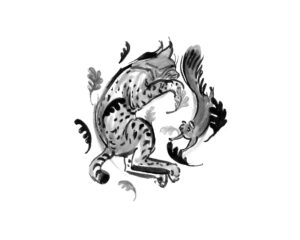Look in your backyard right now, and there’s a decent chance you’ll see the ornate webs of our local orbweaver spiders. After feeding on insects all spring and summer, banded garden spiders and yellow garden spiders get big and very noticeable in fall, just before they lay their eggs and die.
These common arachnids, both from a large group called orbweavers, are best known for their spiraling webs found in many gardens.The banded garden spider (Argiope trifasciata) and golden orbweaver (Argiope aurantia) emerge from their egg sacks as small, fully formed web spinners in spring. They start building by creating a bridge from a shrub branch or window frame to another point, and, through complex geometric patterns, they create a sticky insect trap. The spiders eat their webs and rebuild them at night, and start catching insects again the next day.
For these garden spiders, creating silk is a specialized process. Strands of silk shoot from an apparatus on the spider’s abdomen called the spinneret and twist together to form a tight thread. Silk can be altered depending on its use: only the silk in the outer spiral of the web is sticky, as this is where most insects will be caught.
After catching an insect, the spider uses its legs to turn the prey while spinning silk over it. The spider immobilizes its food with a venomous bite (harmless to humans) before dining.
As the spiders grow, male spiders leave their webs to mate. Sitting on the edge of a female’s web, a male pulls its strands, using vibrations to get her attention. Even though they have eight eyes, orbweavers have very poor vision, so vibrations are the most effective tool for communication during mating season. After mating, a female lays her eggs and creates a thick, papery egg sack to protect them.
Keeping the egg sack safe is a precarious business, and the spiders die in winter, so the babies are on their own after that. A mother spider often suspends the sack on her web to protect it from predators, but the web can become damaged and other spiders and insects might take over part of the sack to hold their own eggs.
The spider young hatch in fall, but wait out the winter in the sack before they emerge and start the process over again.





